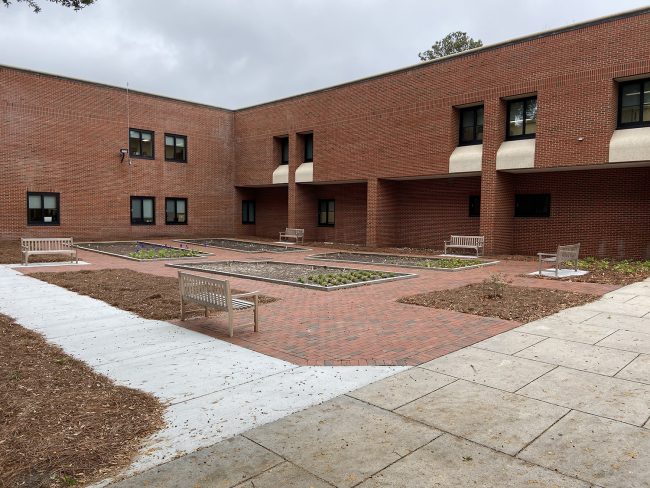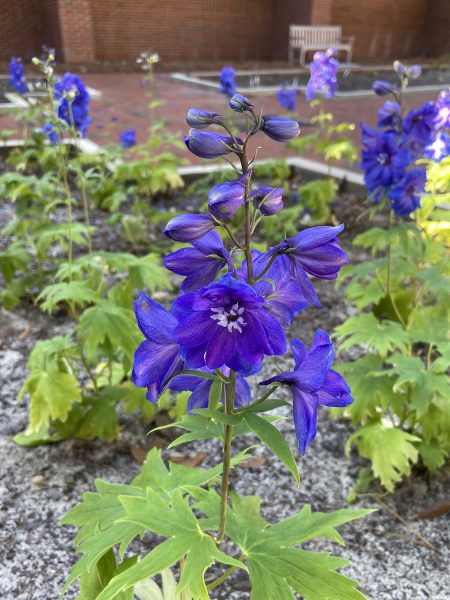New garden on Georgia Southern’s Armstrong Campus a tribute to medicinal plants

The area around Ashmore Hall on Georgia Southern University’s Armstrong Campus has a facelift thanks to a new physic garden full of plants that are historically and currently used for medicinal purposes.
The Physic Garden is unique compared to other collections in the Armstrong Campus’ 268-acre arboretum, which displays a wide variety of shrubs and other woody plants, because all of the plants are selected solely because of their relationship with humans.
“Physic gardens are obviously not a new idea, and our garden is modeled after the Sibbald Physic Garden in Edinburgh, Scotland, where the plants are organized by historical era,” said Philip Schretter, superintendent of grounds operations. “More specifically, our garden is defined by authors that lived during notable time periods related to herbalism. For example, the era of the early herbalist features plants included in the writings of Roman and Greek herbalists.”

The garden is also the first one in the arboretum to use QR codes that will link to a page on the arboretum website with information about each plant.
“This technology creates new opportunities for us to be able to provide more information than just a plant name to the campus community about specimens in the arboretum,” Schretter said.
Schretter noted that all of the plants represent the state of medical care throughout history.
“It was interesting to read which maladies were more prevalent in each time period based on what cures the plants provided,” he said. “The 16th and 17th centuries focuses on plants described by authors living during the rise of herbalism in Europe. The 18th and 19th centuries contains plants featured by writers describing the discoveries of new plant treatments from the Americas, and the 20th and 21st centuries features plants described in modern herbals and the use of plants in medicine today.”
The biggest beneficiaries of the garden will be the students.
“Students will benefit from the garden because the space is certainly more attractive than what was there before,” he said. “I think that since plants in the Physic Garden are almost all familiar, unlike other areas of the arboretum where the plants are more unusual, it might be easier for students to relate to how plants that were once used medicinally are now commonly available in the grocery store.”
For more information on the new garden go to https://finops.georgiasouthern.edu/facilities/landscape-services/arboretum/.
Georgia Southern University, a public Carnegie Doctoral/R2 institution founded in 1906, offers 141 degree programs serving more than 26,000 students through nine colleges on three campuses in Statesboro, Savannah, Hinesville and online instruction. A leader in higher education in southeast Georgia, the University provides a diverse student population with expert faculty, world-class scholarship and hands-on learning opportunities. Georgia Southern creates lifelong learners who serve as responsible scholars, leaders and stewards in their communities. Visit GeorgiaSouthern.edu.
Posted in Press Releases

